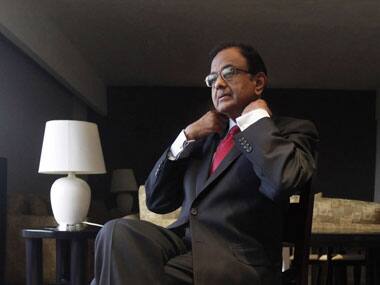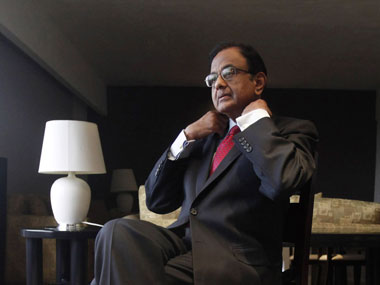By NC Hegde, Rajiv Bajoria and Ketan Palan
For a while, the annual Union Budget has been the most awaited event for both India Inc. and the aam-aadmi equally, with all eyes glued to the television screens on the B-day morning in anticipation. Everyone was eager to figure out how the Finance Minister would put back the troubled economy on fast track growth and bridge the wide gap on the current account.
The Finance Minister was thus burdened with an onerous duty to deliver a pleasant budget which would delight the domestic players and lure global investors by reinstating confidence. The proof of the pudding is in the eating. The Finance Minister has announced a series of capacity building measures that could have a far reaching impact.
[caption id=“attachment_648700” align=“alignleft” width=“380”] Areas like infrastructure has been accorded a lot of importance. Reuters[/caption]
Areas like infrastructure has been accorded a lot of importance. Reuters[/caption]
Areas like infrastructure has been accorded a lot of importance and a series of measures like setting up a regulatory authority for road construction, two new ports in West Bengal and Andhra Pradesh, up-gradation of a port in Tamil Nadu, building industrial corridor along Chennai - Bengaluru and then in the Bengaluru - Mumbai sectors have been announced. He also spoke about plans for developing seven new cities along the Delhi - Mumbai Industrial Corridor. He left the peak rates of duty untouched so that the Industry and the common man has a lot to cheer.
Certain measures have been announced to increase exploitation of natural resources like coal and petroleum in order to make the country more self-reliant in the energy space and thus increase overall industrial productivity and also decrease the dependence of expensive imports so as to bridge the current account gap. He has rationalized the tax rates on coal so that there is no more dispute on tax rates and can focus on power generation.
Over the years, there have been various measures to help the Micro, Small and Medium Size Enterprises (MSME) through a series of tax and non-tax sops to build capacity and help them face competition from relatively larger companies. These benefits at time lead to a situation where the entities have been reluctant to let go of their MSME tag. In order to encourage them to take a leap into the large sector, they will now be allowed to continue with the non-tax sops for three years even after they grow out of the MSME scale.
Further, an Investment Allowance at the rate of 15 percent is proposed to be allowed to the companies engaged in manufacturing and production and investing more than Rs. 100 crores in plant and machineries over a period of two years commencing April 2013 and ending March 2015. This would not only increase the manufacturing capacity for the nation but also generate new opportunities for the ancillaries in the MSME sector.
In order to boost low cost housing and construction sector the Finance Minister announced an additional tax break for fresh housing loans sanctioned upto Rs. 25 lakhs, where the value of property does not exceed Rs.40 lacs and the individual does not own any other house on the date of sanction of the loan. He announced a few policy measures as well for helping this sector. However the increased service tax on homes costing more than 1 crore or having a area of more than 2000 square feet is a rude shock to the millions in the metros like Mumbai and Delhi working hard to acquire a roof within the city.
With a view to augmenting needed resources for plan expenditure, the Finance Minister has chosen the lazy way of raising resources by levying surcharge on the so called “super rich”.The much hyped tax on the super-rich is a surcharge of 10 percent on tax of individuals, HUFs, firms and entities earning taxable income of more than Rs 1 crore. He has also increased the surcharge on companies with taxable income exceeding Rs. 10 crores. He also plans to tax luxury goods like SUVs, mobile phones etc in order to boost revue on indirect tax front.
A Commodity Transaction Tax (CTT) is sought to be introduced on the same lines as Securities transaction Tax (STT) on exchange traded non-agricultural commodity derivatives.
Though the Finance Minister pushed the date of including General Anti-Avoidance Rules in the tax provisions to April 2016, the budget proposes certain measures to plug abuse of liberal tax policies and also generate revenues. It proposes to levy a distribution tax at the rate of 20 percent on profits distributed by unlisted companies through buy-back of shares instead of dividends.
The tax rates for non-residents for income arising from royalties and fees for technical services is proposed to be 25 percent instead of the prevailing tax rate of 10 percent under the Act. The beneficial rates under the tax treaties shall however be still applicable for investors coming from treaty jurisdictions.
The focus is clearly on voluntary compliance and co-operation with industry to garner more resources. He has introduced an amnesty scheme in service tax that would encourage delinquent tax payers to pay the same in installments. Interest and penalty is waived off to encourage voluntary compliance in service tax.
On the whole the Finance Minister has redeemed the task of delivering a growth oriented Budget without saddling the aam-aadmi with huge tax burden. This Budget should instill confidence back on India Inc.
NC Hegde is a Partner, Rajiv Bajoria is a Director and Ketan Palan is a Senior Manager with Deloitte Haskins & Sells
)